|
Harv
|
 |
« Reply #320 on: December 08, 2015, 12:52:31 PM » |
0
|
Harry would go on to run the Wray-blown MGTC for six years as everyday transport. It is suspected that the supercharger is currently running on Kevin McMahon’s MG TC & Y Special, which we saw above. Harry was told in Adelaide that the patterns for the large supercharger would be destroyed, and that his was the last of the line. Thankfully, the moulds survived, and would lead to a later generation of superchargers… more on that below. Harry’s large Wray passed on to his son Philip, then to Colin Bonney unused, then onto Mike Sherrell. John Bowles assisted Mike by designing and building brackets and a manifold to finally fit the large Wray on to Mike's MGTC Special. The supercharger and kit were later onsold to Canada (more on this below). Philip Pyle fitted his small Wray in about 1984 to his Morris Minor convertible. Some years later Peter Compton fitted his small Wray to his MGTC. Pete Harper purchased a Wray supercharger some years ago from a Mr Muir, along with the pulley/speed scale paperwork. The machine is pictured below, running a Holley Model 1904 carburettor (the 1904 was common in Judson applications). The manifolding suits the BMC "A" series engine. The machine has never been installed or run. It is likely that this machine was part of the last batch of twelve.  As noted above, Harry Pyle’s large Wray was sold on to Mike Sherrell. The supercharger was destined to be fitted to Mike’s 1949 1275cc MGTC/9349 XPAW motor. In July 1998 work began on a plenum chamber, with the supercharger being fitted over the next few months. The Wray-blown MGTC was fitted with an 1¾” S.U. carburettor, running a 0.125” jet and UVF needle. It’s first outing was at the Joondalup Round the Houses meeting in October 1998, and was nothing short of spectacular. Boost was off the dial, with the MG rocketing away from the other racers at the start, only to fuel up and bang the relief valve. The mob would then swarm past the MGTC, wreathed in clouds of black smoke. The XPAW would then clear its throat and roar away after them. With enormous torque it would rocket out of the course's tight corners and soon be up and through the pack, only to have the whole process repeat itself over and over. It may have taken some time to get the grin off Mike’s face after the race. The MGTC was in for some serious tuning before it’s next outing. A larger drive pulley was fitted, reducing supercharger speed to 85.7% of engine speed. This reduced boost to a more sane level (if 12-14psi can be called sane). The relief valve spring was reset to around 16psi, whilst the SU needle was leaned up to UVA. The distributor advance was retarded severely. Tuning on the rolling road showed the MGTC was producing 80bhp at the rear wheels, almost double the factory offering and the most the dyno operator said he had seen from this type of MG engine on his equipment. The tuned MGTC made a stunning performance at Ellenbrook, Western Australia in May 2000. A sprint had been set up around the new roads and curbs of a subdivision yet to have houses built. Such an event was perfect for the small vehicle, with more than a few eyebrows raised at the performance - 56.4sec, placing it before fiftyseven other cars including Westfields, Porsche 911s, Nissan Skylines, BMW M3Rs, a Holden VT Commodore HSV GTS, Ford GTHO, Lotus Elise's, Alfa Romeo's, Jaguar E Type and Datsun 260s. While the car was performing strongly, overheating was becoming a problem on the longer events. In November of 2002 the head gasket let go at the Wanneroo Historics meeting. Tear-down showed a totally destroyed head gasket. To combat the problem, Michael tried blocking off all the water holes between head and block with cast iron inserts, though this lead to the engine running too hot. The final solution (in December 2003) copied the factory race engines, where a 1" pipe is run from the top rear core plug to the back of the cylinder head. The MGTC has run in this guise ever since with no gasket failures and at the coolest of temperatures. |
|
|
|
|
 Logged
Logged
|
|
|
|
|
Harv
|
 |
« Reply #321 on: December 08, 2015, 12:53:06 PM » |
0
|
Sadly, in May 2004 disaster struck in the middle of a motorkhana. The Wray seized and stopped dead, with the engine spinning at some 6000rpm. One drive belt snapped, but the other belt kept driving. The supercharger had swallowed one vane and cracked the other three. The tear-down showed the Wray driveshaft had a 270º twist, with the pulley key disintegrated. The casing liner was 0.040" out of round, and the rotor slots opened up. After some major repairs, the Wray returned to service, thought he increased clearances would only support 8psi of boost. Michael sold the Wray, which made it’s way to Vancouver, Canada. The MGT has since been Roots-blown. The photos below, from Mike, show the Wray-blown track terror: 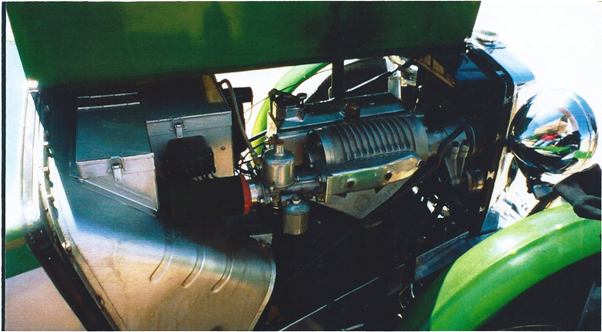  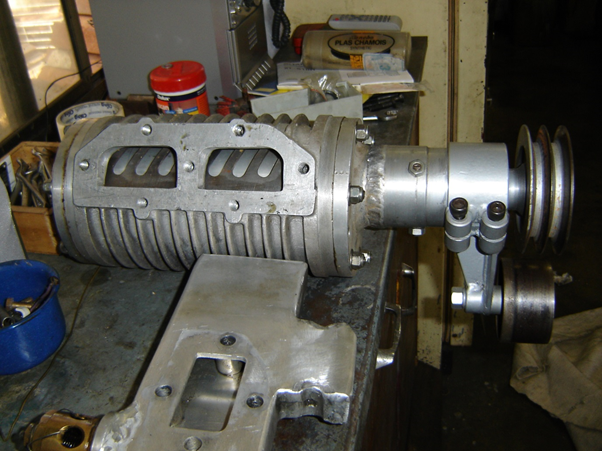 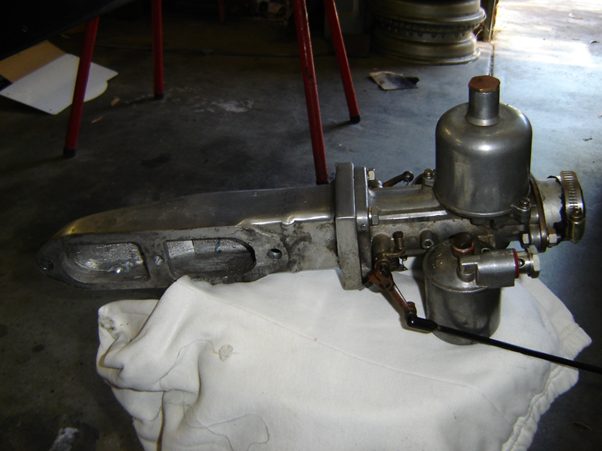 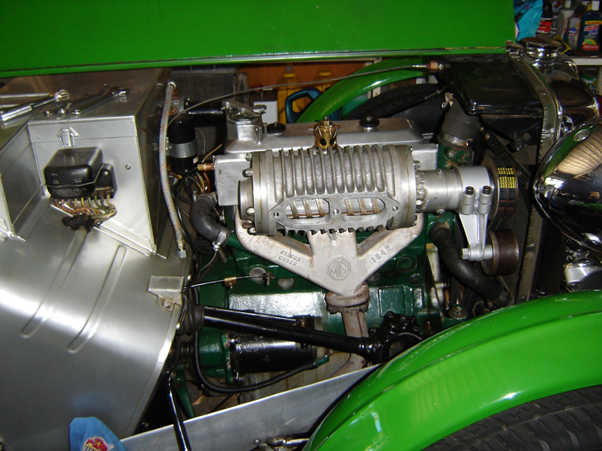 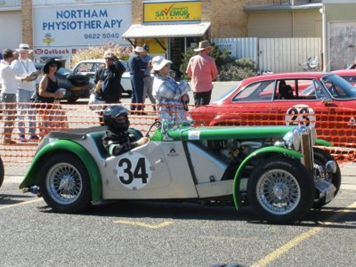 6. Fred Radman and the Second Generation of Wray Superchargers The Wray superchargers were largely being sold in batches to speedshops. Once the speedshops mark-up was added, the superchargers became expensive. The lack of demand for superchargers, possibly due to the ability to install a V8 engine with cheap horsepower into various cars; and the lack of enthusiasm by John Wray and staff (who in previous years had an interest in performance vehicles) led to the stop in production. The drawings, patterns and tooling were sold in about 1986 to Fred Radman, starting a new era in Wray superchargers. In the late 1970’s, Fred’s interest in supercharging was sparked by the noise coming from a motorkhana being held in a nearby shopping centre carpark at Tea Tree Plaza, Adelaide. On investigation, Fred found one of the competitors to be running a Mini Moke, complete with Formula 5000 slicks. The owner of the vehicle was Rob Searle. Rob was serious about his motorkhana vehicles, having competed in a Morrie ute powered with a supercharged Holden 138 grey motor the year before. Rob had purchased a steel case/steel rotor air cooled Type 65 Norman in pieces, with one end plate missing and no vanes. Having remade the missing components, the Norman was mounted to the grey motor and fed by twin Strombergs in suck-through mode. The Norman was later transferred to the 1275cc Moke engine, and chain-driven. A custom cam was ground up by Chris Milton Motors. Rob found that the suck through system experienced throttle lag, and modified it to run blow-through. A single SU carburettor was mounted in a pressurised box, made from an old saucepan. The SU would later be replaced with a Reece Fish carburettor. A Stromberg throttle body was employed as a waste gate, controlled by flexing a Holden fuel pump diaphragm to begin wasting at some 15psi of boost, Under load, the induction and exhaust noise of the little brick engine was incredible. (photos: Fred Radman) 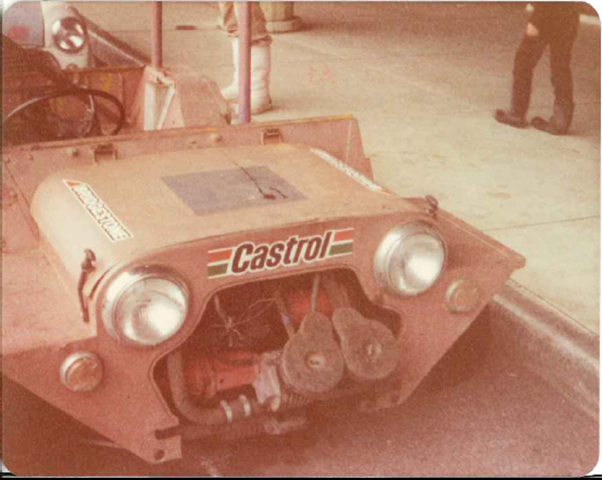 |
|
|
|
|
 Logged
Logged
|
|
|
|
|
Harv
|
 |
« Reply #322 on: December 08, 2015, 12:53:49 PM » |
0
|
 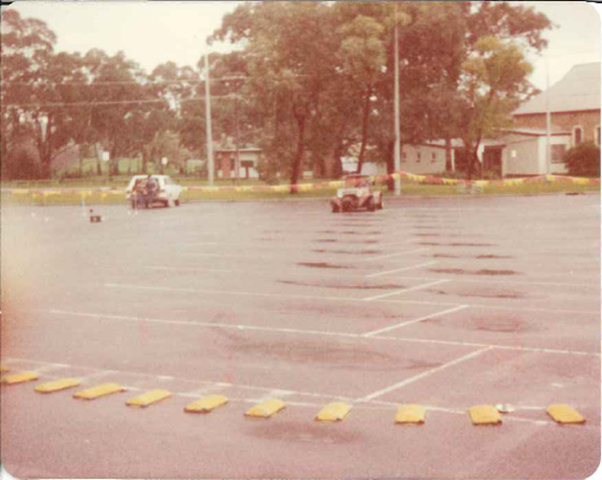 Rob would later go on to wreck out the Moke, selling the Norman to Dennis Boundy to place into a Holden museum. The ex-Moke Norman supercharger is shown in Dennis’ photo below: 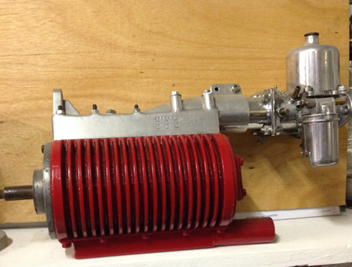 Dennis is no stranger to Norman superchargers… his Norman blown FJ sedan is legendary for running some 113mph on the Lake Gairdner Great White Dyno. The FJ runs a water cooled Norman, mounted on the drivers side of the grey motor and fed by a 350 Holley. The water cooling is run through a water/air intercooler. Dennis’ photo of the Norman blown FJ are below: 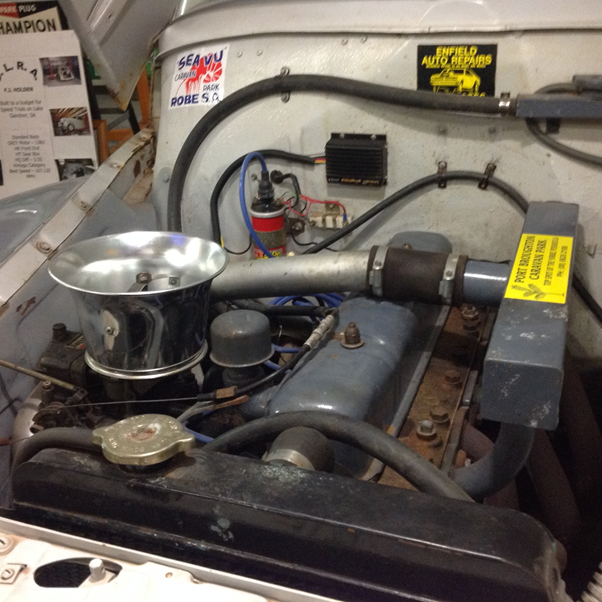 A few years later, with the noise of the Norman-blown Moke still ringing in his ears, Fred went on to purchase his first supercharger. This was a small model Wray, which had come from a Renault 8 or Renault 10. A few years later still a second Wray was purchased, again small model complete with a Mini fitment kit. The earlier supercharger was onsold to Kevin Shearer, whilst Fred still has his second supercharger. In the late 1980’s, Fred got into contact with John Wray, who in turn directed him to a Greg Pill, who had worked for Wray and had the moulds and tooling. This was around the time that the final batch of twelve superchargers was being made the MG TC Owners Club of Perth. Fred can remember meeting John Wray, who carried a small book of engineering details Fred purchased the casing moulds and tooling, and went on to cast his first supercharger. Pictured below are some of the drawings, sketches and doodlings which came with the moulds and tooling (photos: Fred Radman): 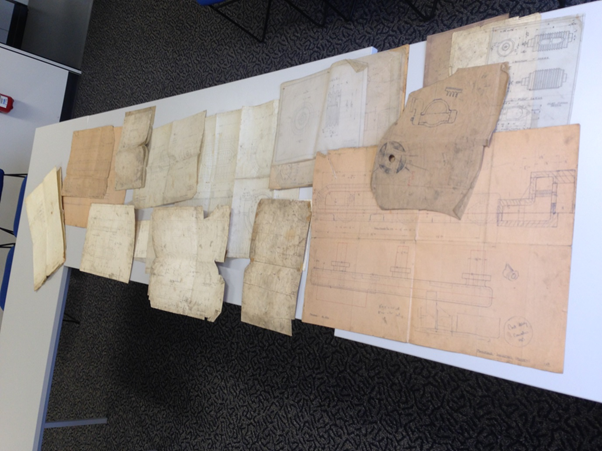 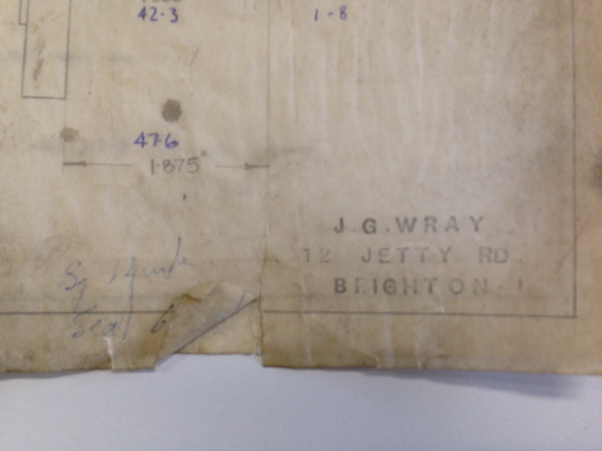 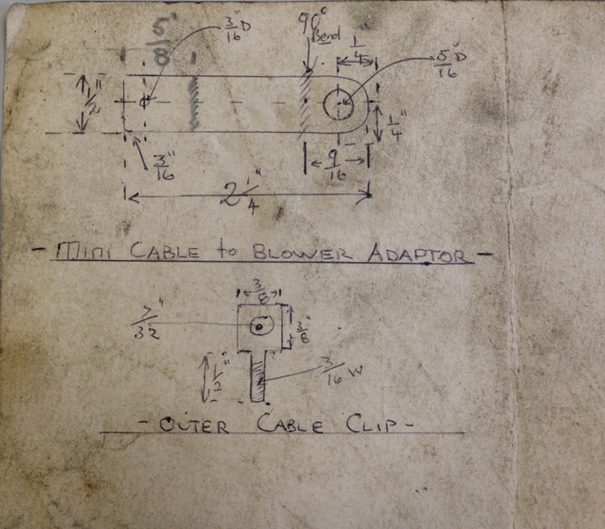 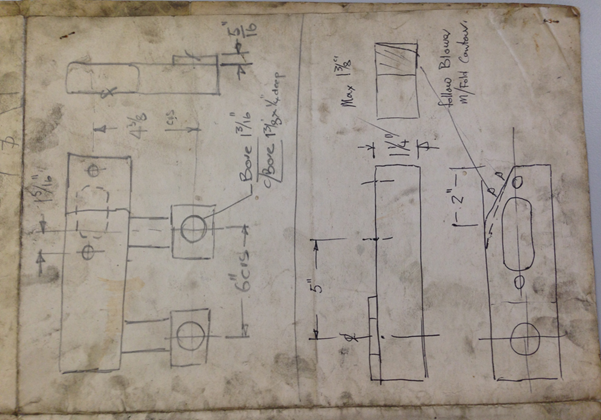 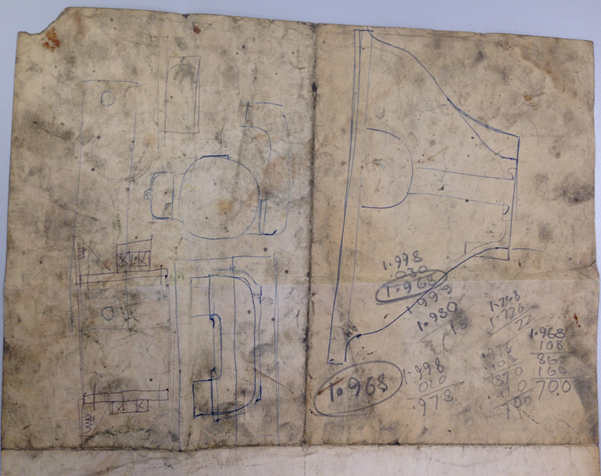 The pink drawing in the upper photo nearest the camera is a Holden grey motor manifold (sadly, no patterns or jigs exist for this one). |
|
|
|
|
 Logged
Logged
|
|
|
|
|
Harv
|
 |
« Reply #323 on: December 08, 2015, 12:54:29 PM » |
0
|
The small foundry used for Fred’s first casting run in Magill, Adelaide did not produce a satisfactory casting, and Fred changed to the Castech foundry (in Wingfield, South Australia - http://castech.net/) for all subsequent work. The casing castings for the Radman superchargers were done in CC601 (A356/A357) aluminium alloy, which was later heat treated. Machining of the raw castings was undertaken by Bob Jolly. Bob was an ex-Isle of Man bike racer who competed across Europe in the mid-1970s. Bob also scratch built JAP, Velocette, Triumph and Norton gear. He was also the owner of Bob Jolly and Co Machining, which still exists: http://bobjolly.com.au/.  Bob's company was started in 1979 as Bob Jolly and Co Racing, with simple turning and milling operations servicing the racing community from his St Peters, Adelaide workshop. Bob relocated his workshop to Lobethal in the Adelaide Hills, and then to 82-84 Francis Road Wingfield, where they still operate today. All the rotors machined by Bob have distinctive rotor vane slots. The profile of the slitting saw used gives radiused roots, which lowers root stress in the rotor. The photo below (from Fred) shows the radiused vane root profile: 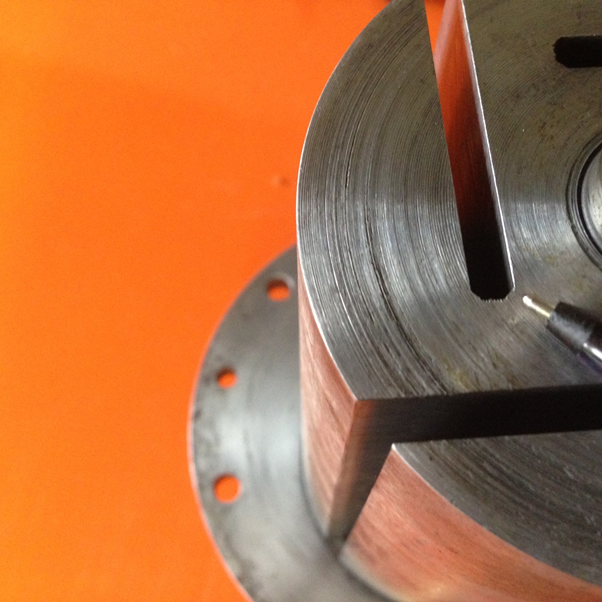 Fred went on to make L60, L96 and T96 machines, along with one T60. Fred had been told by John Wray that cast iron diesel cylinder liners were used as casing liners in the Wray superchargers. For Fred’s machines, steel bore casing was used, with diagonal ports. Unlike the original Wray superchargers, Fred’s machines had the liners honed. Rotors were machined from 6060 or 6061 aluminium alloy. Like the earlier Wrays, the vanes were made from Tuffnol, which Fred sourced from Cadillac Plastics in Adelaide. Fred also has the patterns for the Mini and T96 inlet manifolds. The latter can be machined for a single barrel downdraught carburettor, or cut to suit a side-draught SU or injection throttle body. The Radman superchargers mainly used downdraught Stromberg carburettors with a variable main metering jet. Pictured below (photo: Fred Radman) is a D5 factory down draft S.U carburettor, used on the early Radman Mini setups. The adaptor mates it to the stud pattern on the intake manifold. Whilst it worked well it was not an easy carburettor to source, and Fred soon changed to Stromberg carbs for ease of availability. 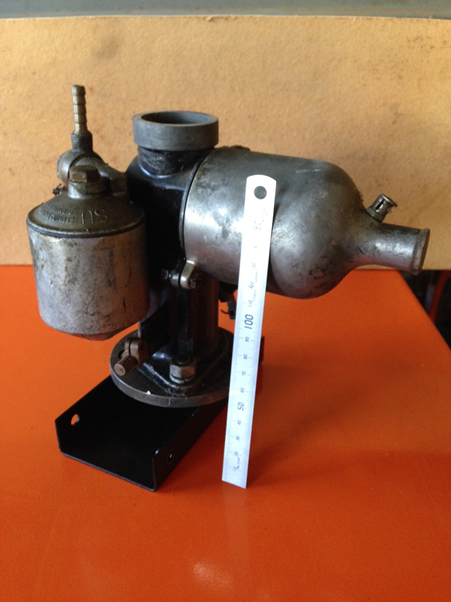 Authors note: I have named the second generation of machines (made by Fred) Radman superchargers, to differentiate them from the Wray supercharger. Fred is modest, and views them as Wrays. I personally think though that anyone who manufactures superchargers from scratch, and continues their development deserves more than a little recognition… hence I’ve kept the Radman naming. Around one dozen of the Radman superchargers were made, with the finished machines selling for cost at around $1000. Some of the superchargers were stamped with model and serial numbers, whilst others were not. The first of the Radman superchargers was sold to Peter Wilson in Adelaide on the 15th of January 1993 as a “kit” of parts. The liner was not machined for inlet/outlet ports, with Peter undertaking his own port timing. Peter built a Morris 8 special, named Pieces of Eight. Pieces of Eight was built in South Australia between 1988 and 1990, based on a 1937 UK Morris 8 special. It is a fully CAMS accredited Group K vehicle. It has a Morris 8 four-cylinder side valve engine, with the supercharger running at 12psi. It runs a single 1¾” SU on avgas. The car has finned 8” brakes driven by original 1935 hydraulics. Suspension is by Hartford friction shock absorbers, keeping the bounce out of 16”x3½” Dunlop magna wire polished alloy wheels.  The images below (photos: Fred Radman) shows the original Radman supercharger made for Pieces of Eight, along with the original 2” SU carburettor supplied. To fit between the dumb irons on the chassis it was machined down so as to have only one bearing on the input end. The supercharger is directly driven from the Morrie’s crankshaft. |
|
|
|
|
 Logged
Logged
|
|
|
|
|
Harv
|
 |
« Reply #324 on: December 08, 2015, 12:55:08 PM » |
0
|
  After the car was sold the supercharger rotor was subsequently shortened and a spacer fitted inside the casing to lower the capacity. Such modifications, whilst unusual, were not unique. Bob Jolly took a T96 casting and cut and shut it to make a T60 for Dave Linton (perhaps the only T60 ever made). Jim Howard from Slider Engineering hard anodised the rotor and also machined and anodised the tooth belt pulley. The cut and shut T60 unit would later be fitted to an Austin 7 race car. The second Radman supercharger was also sold to another Morris 8 owner, with a further Radman going to an Alfa Romeo-powered Amilcar. Fred moved to the UK, with sales of the Radman Wrays continuing in his absence by Bob Jolley, Dave Linton and Phil Evans. When Bob sold a supercharger, he often stamped a small “R” (for Robert) into the casing. The “R” is shown in the image below of a T96 Wray (photo: Fred Radman). 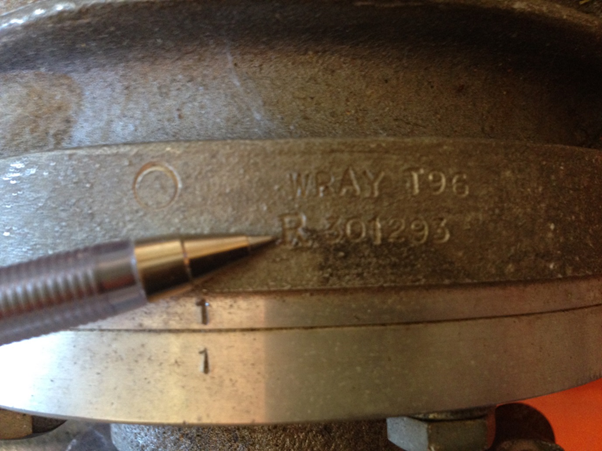 Fred sold two superchargers whilst in the UK to John Bibby, who rebuilt Shorrock and other superchargers. John still trades as John Bibby Superchargers (72 Feiashill Road Trysull Wolverhampton West Midlands WV5 7HT). The image below (photo: Fred Radman) was taken in the UK at John Bibby’s place, and shows a Cozette eccentric vane supercharger, a Wray L60 sliding vane supercharger and a Shorrock C75 eccentric vane supercharger. 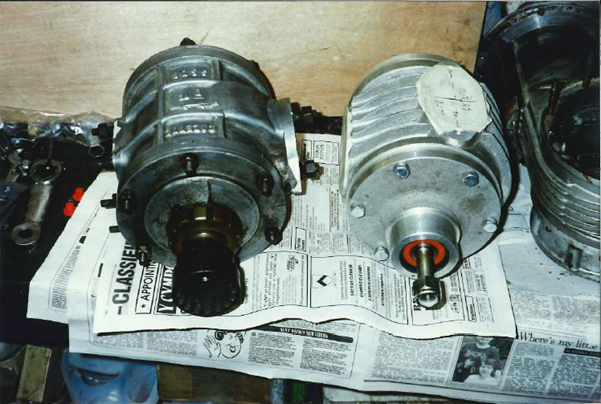 Whilst in the UK Fred continued his research, speaking to Tuffnol about improved vane materials. Sadly, the increasing availability of the Aisin superchargers used by Toyota reduced the market for the Radman superchargers, and no further batches were made. Fred still has a number of the castings and complete machines – the photo below (photo: Fred Radman) shows a manifold Fred recently machined:   Regards, Harv (deputy apprentice Wray supercharger affecionado). |
|
|
|
|
 Logged
Logged
|
|
|
|
2brite
wa-club
Senior Member
   
 Offline Offline
Posts: 290
Cruizin's devine in a '59

|
 |
« Reply #325 on: December 13, 2015, 12:31:55 PM » |
0
|
All i can say is "WOW"
That's a lot of info ,photos ,and history right there
Thanks for sharing
Great stuff
|
|
|
|
|
 Logged
Logged
|
|
|
|
customFC
nsw-club
Guru
    
 Offline Offline
Model: FC
Posts: 5900
Ask me about microwaving cats for fun or profit.

|
 |
« Reply #326 on: January 04, 2016, 09:37:11 PM » |
0
|
|
|
|
|
|
 Logged
Logged
|
|
|
|
|
Harv
|
 |
« Reply #327 on: January 10, 2016, 01:04:37 PM » |
0
|
Cool video  . My reproduction Inconel vane springs are in that supercharger  . Cheers, Harv |
|
|
|
|
 Logged
Logged
|
|
|
|
|
GreyFC
|
 |
« Reply #328 on: January 11, 2016, 08:04:18 AM » |
0
|
For those that do not wish to reach out to facebook here is the video: |
|
|
|
|
 Logged
Logged
|
|
|
|
zulu
nsw-club
Guru
    
 Offline Offline
Model: FE and FC
Posts: 1863
Old Boonah Ambo

|
 |
« Reply #329 on: January 11, 2016, 02:02:27 PM » |
0
|
thanks for putting that up GreyFC
all I can say is......WOW
|
|
|
|
|
 Logged
Logged
|
|
|
|
|
Harv
|
 |
« Reply #330 on: January 17, 2016, 09:35:52 AM » |
0
|
Ladies and gents,
This post will focus on some of the historic documents that I have been able to get access to of late.
Recently, I have been able to access a copy of the “GO! With Safety” brochure that Eldred printed in the mid 1960’s (no later than 1965… see the Eddie Thomas catalogue below) whilst still living at Tolleys Road, Hope Valley South Australia. My thanks to the gentlemen who lent me a copy… the only one I have seen for sale sold some years ago on eBay for $400 (!). The brochure covers the sale of Type 65 Norman kits for the grey motor (to suit all Holden models, 1948-1963 inclusive). Eldred was selling two kits – one to suit all models FX-FJ (£107 10’), and one to suit all models FE-EJ (£111). In the copy of the brochure, the earlier kit had been discontinued (crossed out by pen) and the latter kit modified to suit FX-EJ (i.e. only one kit for all grey motors). Eldred was also selling bare superchargers for £57 10’, along with individual spare parts (casings, end plates, vanes, bearings, seals, crank and supercharger pullies, supercharger and generator brackets, supercharger outlet and inlet manifolds and elbows). It is interesting that the kits were such that “the average man with a comparatively slight mechanical knowledge can fit it in approximately one half day”. Equally interesting that the tools needed were a hammer, cold chisel, pliers, screwdriver, 10” and 8” shifter and an 18” tyre iron.
Eldred’s take on supercharging the grey was interesting. The kits were designed for the Holden grey motor, or engines of 1000-2500cc. Eldred notes the manifolds were slotted for the BXOV-1 carburettor, or a much larger Nicchi (Nikki) 1 5/8” downdraught which Eldred sold (the Stromberg gave just as good at low and medium speeds, though the Nikki was better up top). This has got me curious - anyone know a vehicle in Australia in the early sixties running a large single barrel Nikki? For the grey, the kits ran at 1.1 times engine speed to give 5psi boost at 30mph and top gear, and 3 psi at 20mph and top gear with the FB-EJ bore (slightly higher with the smaller FX-FC 3” bore). The kits required the use of super fuel, with Eldred noting he was intending to market an 8spi boost unit that had to use 115 octane fuel (bear in mind that modern Aussie pump fuel is typically 91RON, whilst E85 is 105RON and methanol is 109RON). From Eldred: “The supercharger will not give you a racing car’s performance – certainly not on pump fuel, but it will put you on a par with a Valiant or a Holden 179 in acceleration, particularly in top gear. If you tow a boat or a caravan or like to “feel” a car, you cannot afford to be without a supercharger".
|
|
|
|
|
 Logged
Logged
|
|
|
|
|
Harv
|
 |
« Reply #331 on: January 17, 2016, 09:36:26 AM » |
0
|
The second brochure I have been able to access is a pricelist from the late 60’s. Prices are in dollars, so this is at least 1966 (bear in mind that Eldred moved to Noosa in 1966, and passed away in mid 1971). The prices are all quoted as for Queensland delivery with freight additional – it is a fair bet that Eldred had moved to Noosa by this stage. The brochure indicates the following models of Norman supercharger were available:
Type 65 Standard
Type 65 Lightweight (LW)
Type 65 Super Lightweight (SLW)
Type 70 Lightweight (LW)
Type 70 Super Lightweight (SLW)
Type 75S Lightweight (LW)
Type 75S Lightweight (LW) Deluxe
Type 110 Leightweight (LW)
Type 265 Standard
Type 265 Lightweight (LW)
Type 265 Super Lightweight (SLW)
Type 270 Lightweight (LW)
Type 270 Super Lightweight (SLW)
Standard models have a cast iron casing and a steel rotor. Lightweight models change to aluminium casings (cast iron or steel lined), whilst the Super Lighweight units have aluminium casings, tufftrided cast iron or steel liners and a lightened tufftrided steel rotor. Aluminium rotors are not offered. It is interesting that some of Eldred’s other machines (the Type 45, Type 90 and Type 110) are not offered for sale. The engine capacities suggested for each size machine are as follows:
Type 65: 1250-2250cc (note the GO! With Safety brochure advise above of 1000-2500cc)
Type 70: 1750-2750cc
Type 75S: 2250-3250cc
Type 265: 2500-4500cc
Type 270: 3000-5500cc
Worked motors are recommended to use 2/3 of the above capacities. The brochure indicates that early Holden kits are available for Type 65 and Type 70 superchargers, whilst H-model Holden kits are available using the Type 75. A kit for the Toyota 1900cc motor is also indicated.
|
|
|
|
|
 Logged
Logged
|
|
|
|
|
Harv
|
 |
« Reply #332 on: January 17, 2016, 09:39:03 AM » |
0
|
A (third) separate pricing brochure adds the Type 110 (both Lightweight and Super-Lite), indicating a target motor of 2500-3500cc. This brochure indicates that the H-series Holden kits are based on the Type 110, using either two 1 ¾” or two 2” SUs. This brochure again indicates early Holden kits using the Type 65 or Type 70, using either the original BXOV-1 Stromberg carburettor or a 2” SU. Interestingly, this brochure indicates that both the Type 70 and Type 110 can be offered with a clutch drive (I have only seen this previously on Type 45, Type 75 and Type 90 machines). The fourth brochure below was used to sell Mike’s Normans:  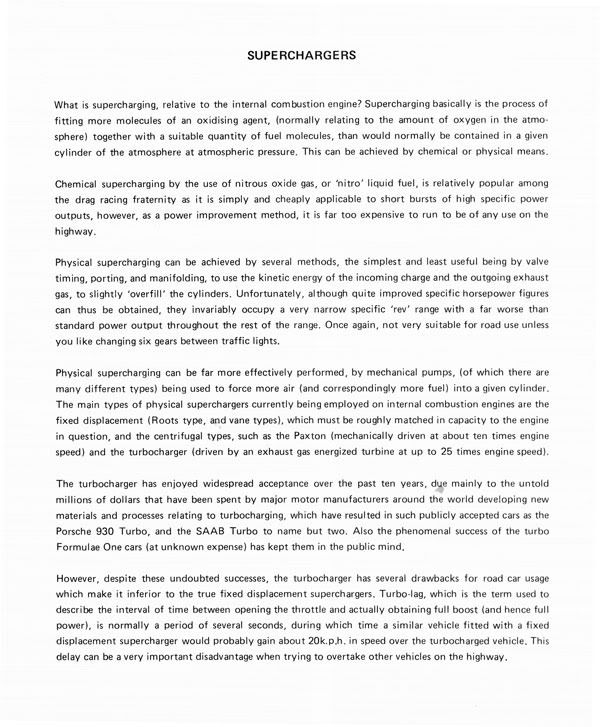 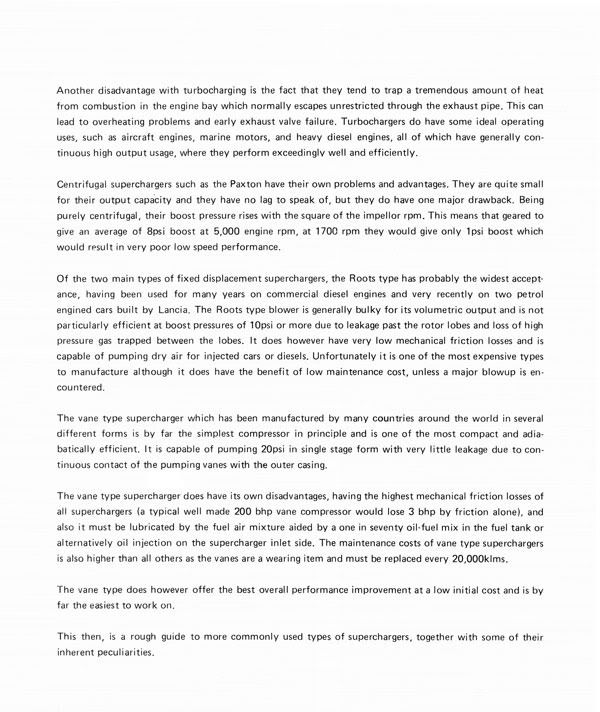 [url=http://s929.photobucket.com/user/V8EKwagon/media/These%20brochures%20were%20a%20part%20of%20the%20display%20of%20the%20Bobcat%20FJ%20custom%20coupe%20at%20the%20Sydney%20Hot%20Rod%20show%20at%20Darling%20Harbour%204_zpsqfk2t5ah.jpg.html] 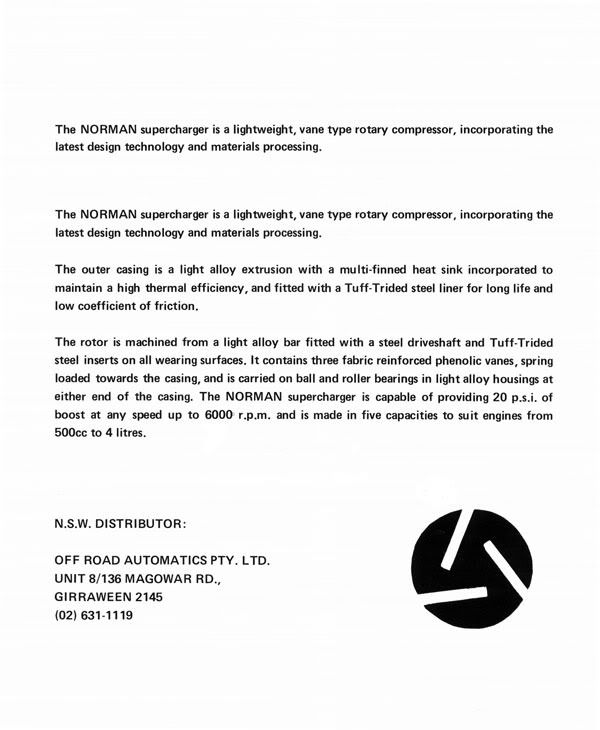 [/URL |
|
|
|
|
 Logged
Logged
|
|
|
|
|
Harv
|
 |
« Reply #333 on: January 17, 2016, 09:39:36 AM » |
0
|
|
|
|
|
|
 Logged
Logged
|
|
|
|
|
Harv
|
 |
« Reply #334 on: January 17, 2016, 09:40:10 AM » |
0
|
|
|
|
|
|
 Logged
Logged
|
|
|
|
|
Harv
|
 |
« Reply #335 on: January 17, 2016, 09:42:29 AM » |
0
|
The fourth is an article from The Australian Hot Rodding Review of June 1968, showing the Norman-blown Bobcat:   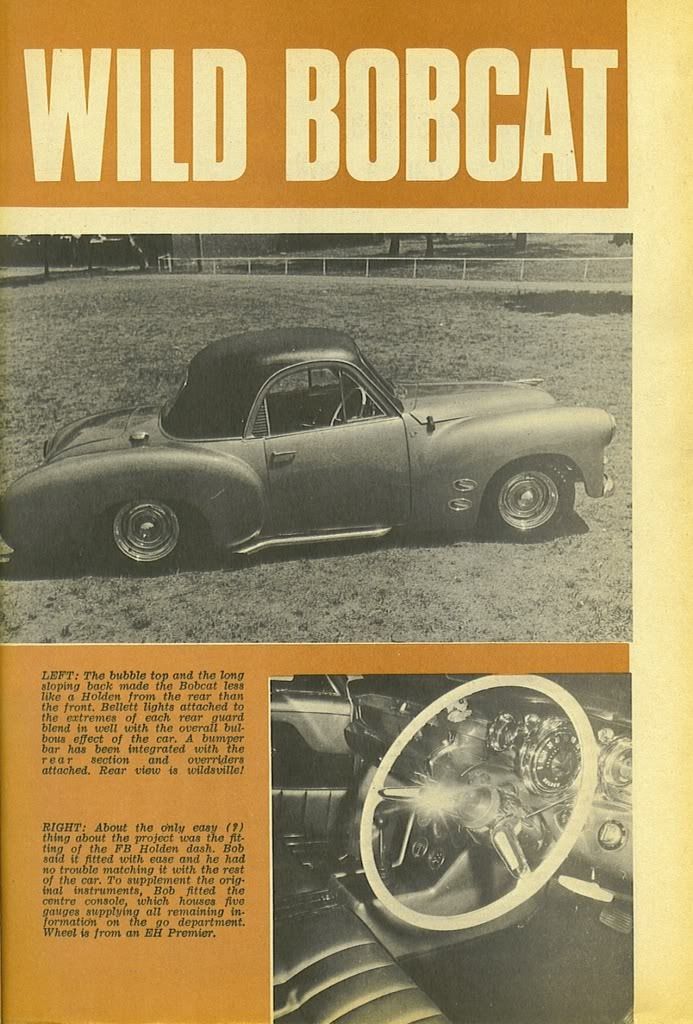 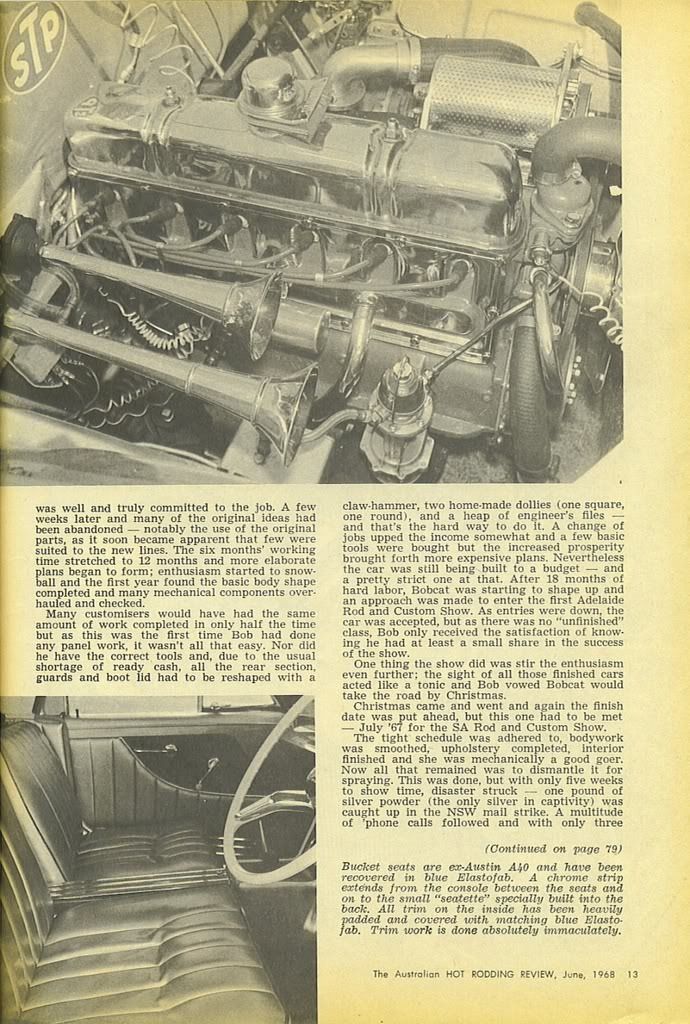 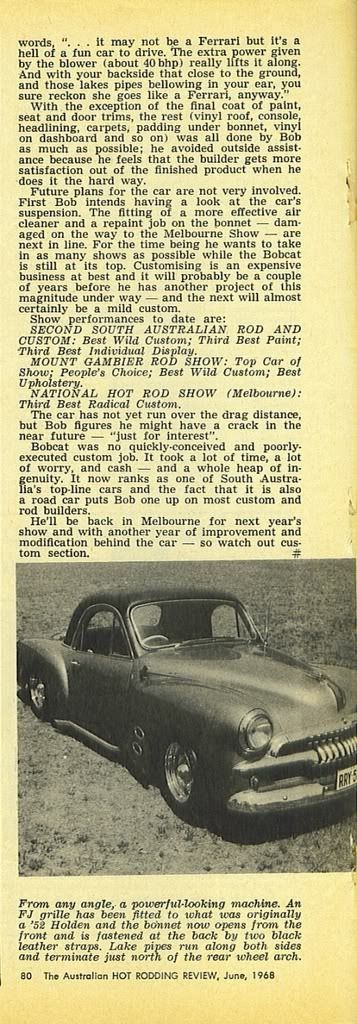  The fifth is an article from Adelaide’s The News of September 28th 1964: 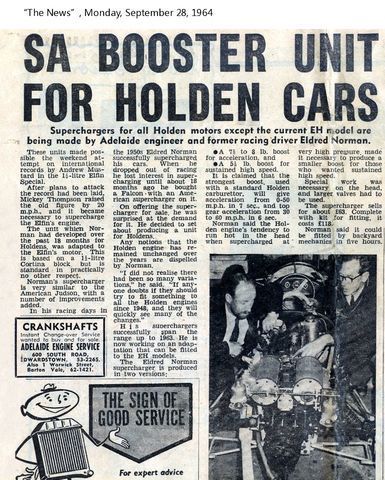 I have copies of another three articles (The Blow for Go! article from the 2009 Street Machine Hot Rod Annual, the Dirty Stuff column from Street Machine of May 2014, and the article on Grantley’s Norman-blown FJ from Chopped Nº. 7), though these are pretty new and I am seeking permission from the publishers to post them here. Cheers, Harv (deputy apprentice Norman supercharger fiddler). |
|
|
|
|
 Logged
Logged
|
|
|
|
|
Harv
|
 |
« Reply #336 on: January 23, 2016, 12:31:34 PM » |
0
|
Ladies and Gents, It appears that a number of different logos were used for the Norman superchargers. The picture below shows a metal badge affixed to the side of a Type 65 supercharger, taken from the GO! With Safety brochure. 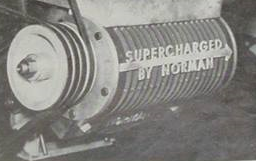 I have never seen one of these affixed to a Type 65 in the flesh, nor can I see how they attach... they may have been sticky-taped on for the brochure photos. The logo however is similar (if not identical) to the ones used on the Rowe/Wigzell WonderCar: 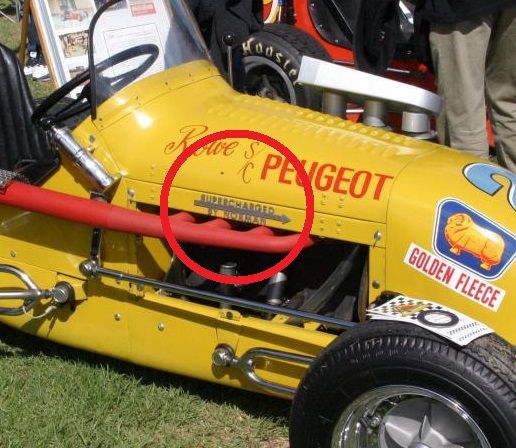 A different logo is shown in the1966 Blow for GO! Article as an EJ Holden window sticker: 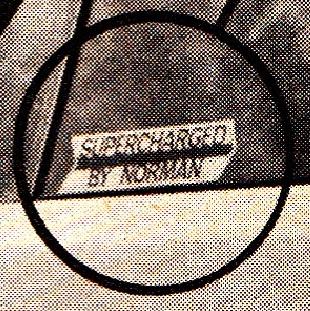 Cheers, Harv |
|
|
|
|
 Logged
Logged
|
|
|
|
zulu
nsw-club
Guru
    
 Offline Offline
Model: FE and FC
Posts: 1863
Old Boonah Ambo

|
 |
« Reply #337 on: January 23, 2016, 06:11:17 PM » |
0
|
Gee, It would be nice to have one of those to stick on the back window
|
|
|
|
|
 Logged
Logged
|
|
|
|
|
Harv
|
 |
« Reply #338 on: January 23, 2016, 07:38:55 PM » |
0
|
Gee, It would be nice to have one of those to stick on the back window
Agree. I'd be happy to repop some, but I've got no idea of the colours. |
|
|
|
|
 Logged
Logged
|
|
|
|
|
Harv
|
 |
« Reply #339 on: January 24, 2016, 10:01:54 AM » |
0
|
Ladies and gents, One extraordinary document I have been able to lay my hands on (with thanks, Ed) is a copy of a thesis written in November 1985 - Rotary Vane Compressors, Testing and re-design of a sliding vane compressor for supercharging. The thesis was authored by Mark Hammond and Edward Vieusseux at the NSWIT. Hammond and Vieusseux’s project evaluated the suitability of a Norman to supercharge engines up to 2,000cc capacity. The work undertook extensive bench testing, including analysis of alternative vane materials. The test mule for this work was one of Mike’s 200 Normans, casing number 2000002S, as shown below: 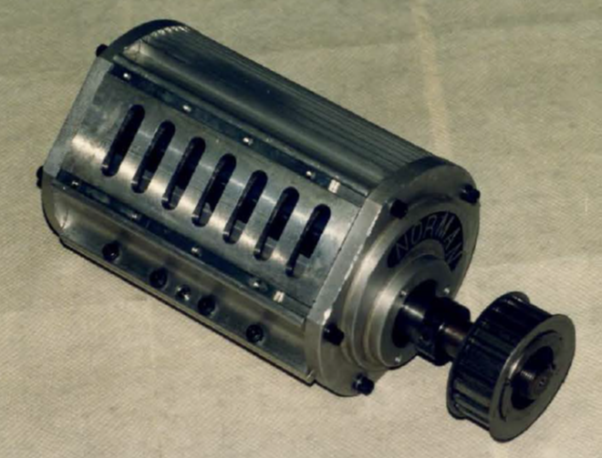 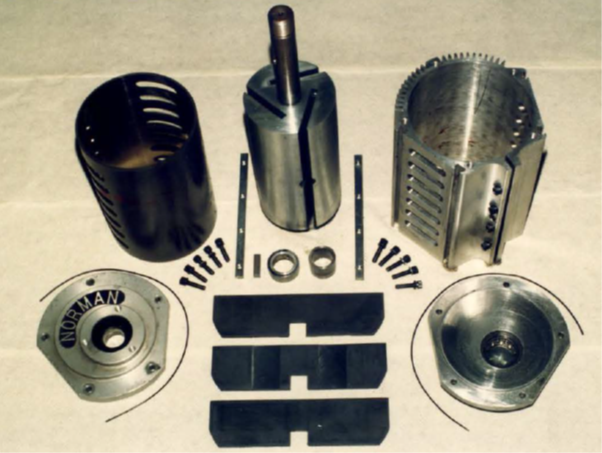 The test rig drove plain air (and in some cases lubricant spray) through the Norman, using a waterbrake dyno driven by a BMC 1800cc engine. Different casing liners were used to give different port timings (0% compression, the standard 16% compression, and a higher 32% compression), along with two rotors (3- and 4-vane). |
|
|
|
|
 Logged
Logged
|
|
|
|
|



